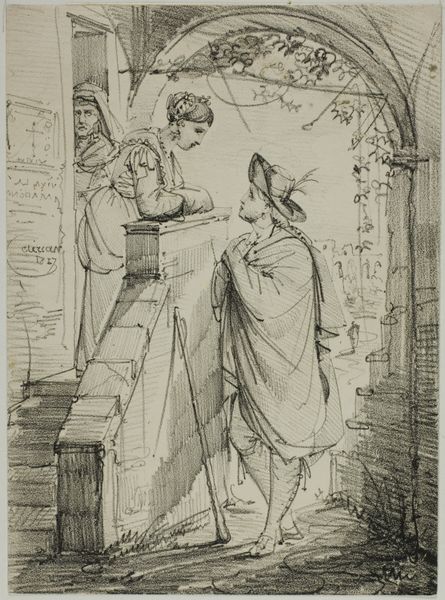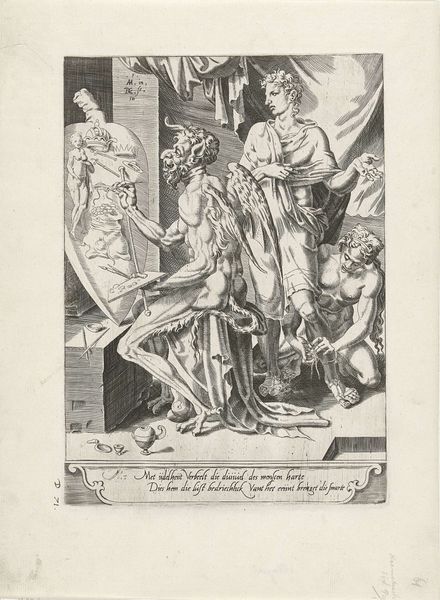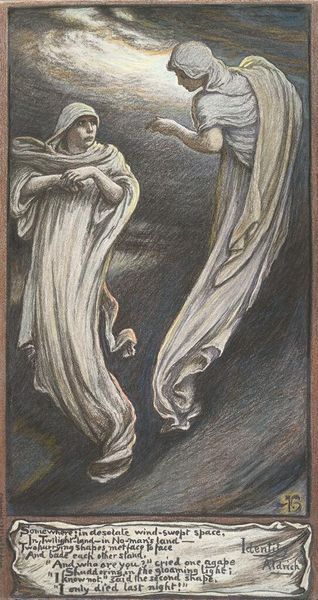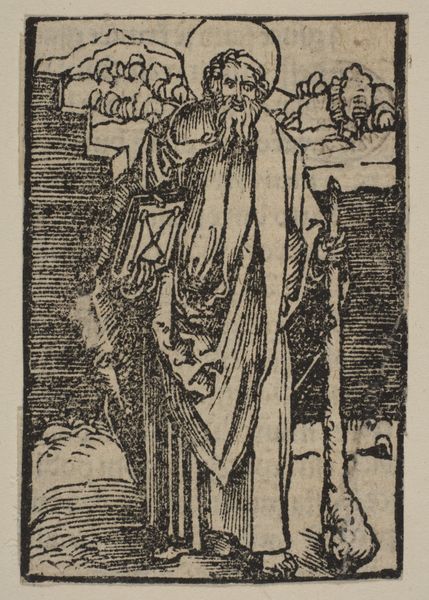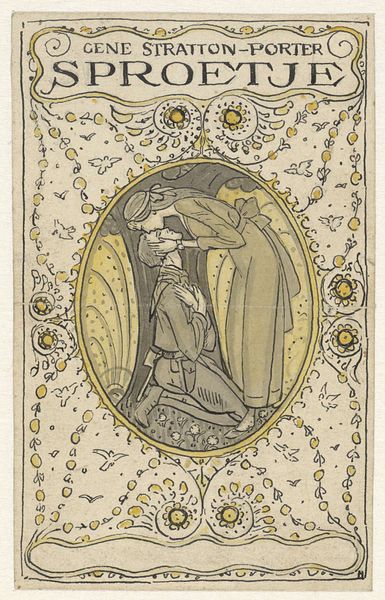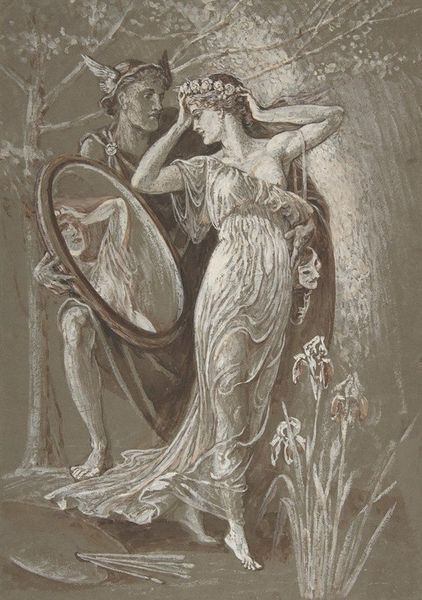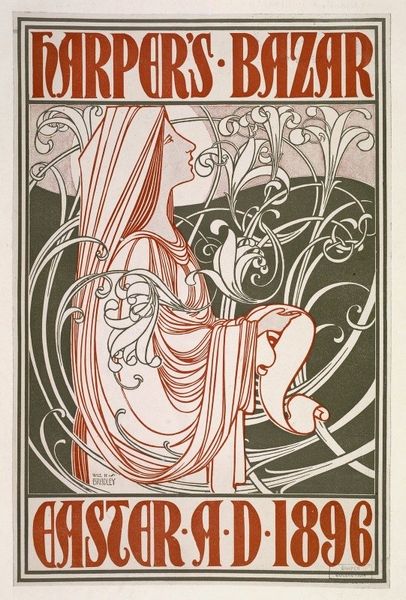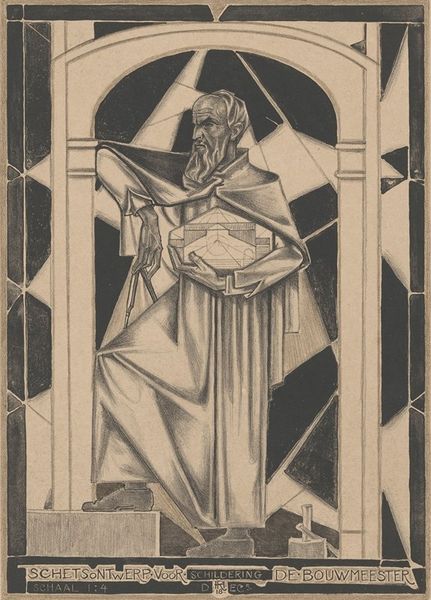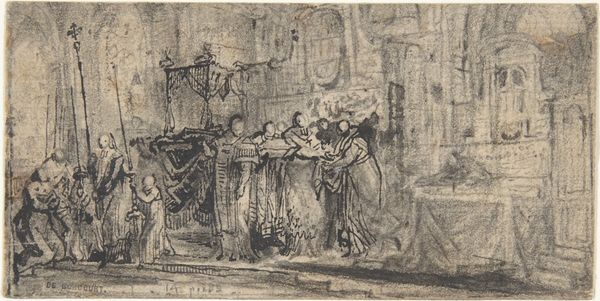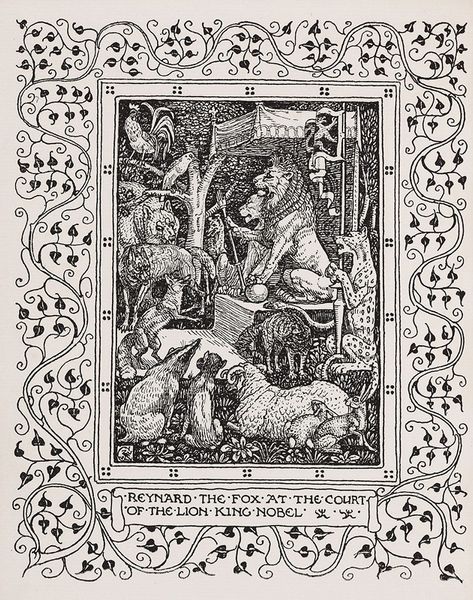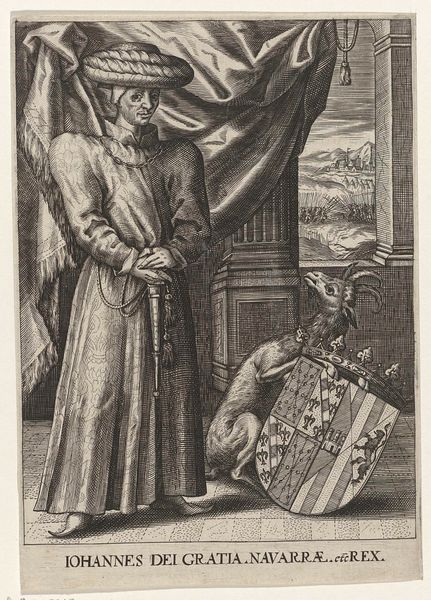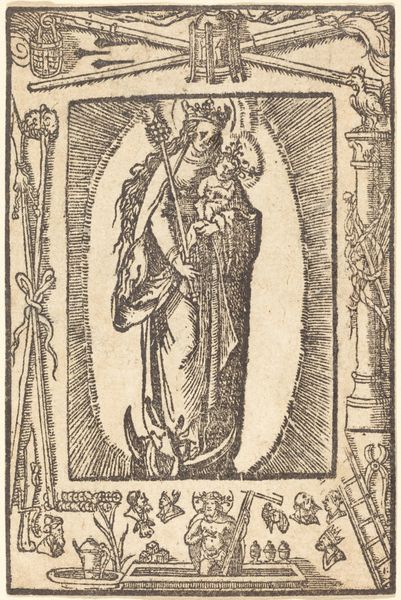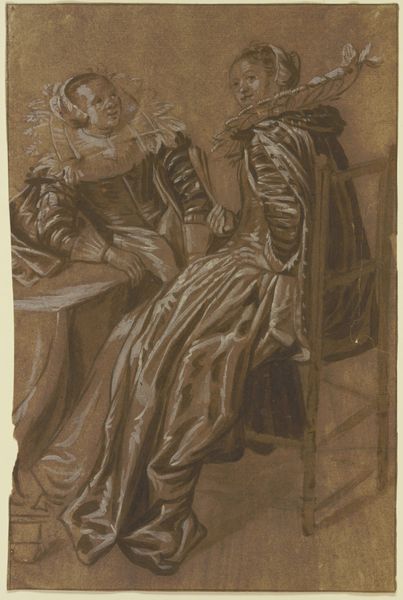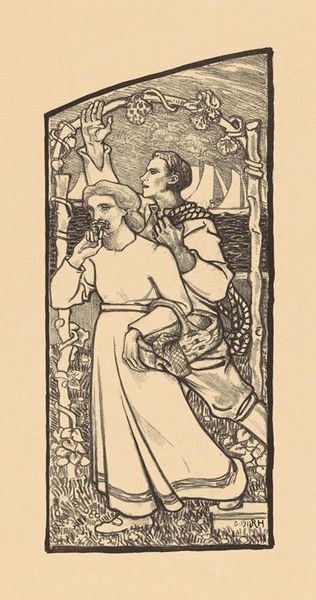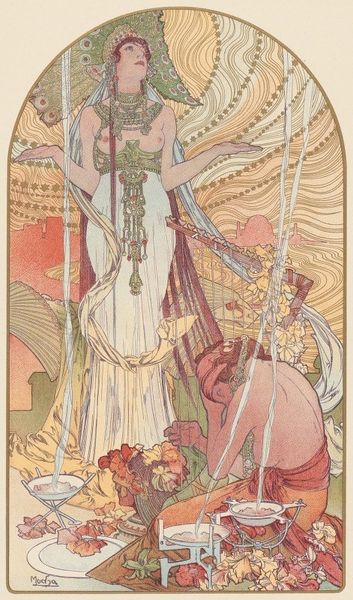
drawing, coloured-pencil
#
drawing
#
coloured-pencil
#
allegory
#
caricature
#
figuration
#
coloured pencil
#
symbolism
#
portrait art
Copyright: Public Domain: Artvee
Curator: Looking at Elihu Vedder's "The Divorce of Reason," completed sometime between 1883 and 1884, I'm immediately struck by how this colored pencil drawing stages a kind of intellectual and spiritual crisis. It seems to invite us to consider what happens when logic and emotion part ways. Editor: Mmm, it’s got a somber air to it, doesn’t it? That monk-like figure with the owl perched on his shoulder—he just radiates a severe kind of intelligence. And then there's the figure of, I guess, artistic inspiration—blowing smoke signals from her flute. What a fascinating visual dichotomy! It makes you wonder, are they truly at odds? Curator: Vedder definitely leans into allegory here, creating these contrasting personifications of reason and creativity. The architectural framework, almost like a stage set, highlights the tensions he saw between these two aspects of human experience, especially in the context of late 19th-century society and its rapidly changing ideas. There is even a short poem right there on the paper, adding depth. Editor: Yeah, the architecture is almost too perfect; a set design. But the two don't look divorced to me, though; they look more like… siblings who are struggling to hear one another! That melancholy air makes it seems like they both know their codependence, somehow, even as one wields instruments and books and the other music! So dramatic. Curator: That's a lovely way to put it—codependence. You see that conflict embodied through Vedder’s choice of symbolism too—the precise measuring tools and book contrasting with the snake sculpture, the wine cup, and flute. It all emphasizes how Western thought compartmentalizes different modes of understanding and experiencing the world. The owl of Minerva is almost laughing at us all. Editor: Ha! They seem more sad to me. I am stuck, too, on those words written below, 'Unborn Tomorrow, and dead Yesterday' It's as if there's nothing *now.* Curator: It's a complex piece that, to me, reveals how Vedder himself seemed caught between a romanticized view of artistic inspiration and an increasing pressure toward rationalization that marked his time. Thanks for highlighting those contemporary implications—it makes you appreciate its message and craftsmanship all the more. Editor: No, thank you. Next time I see such a striking, if a little haunting, work I will remember Vedder and these siblings estranged in life, seeking reconnection always, because they really only have each other.
Comments
No comments
Be the first to comment and join the conversation on the ultimate creative platform.
